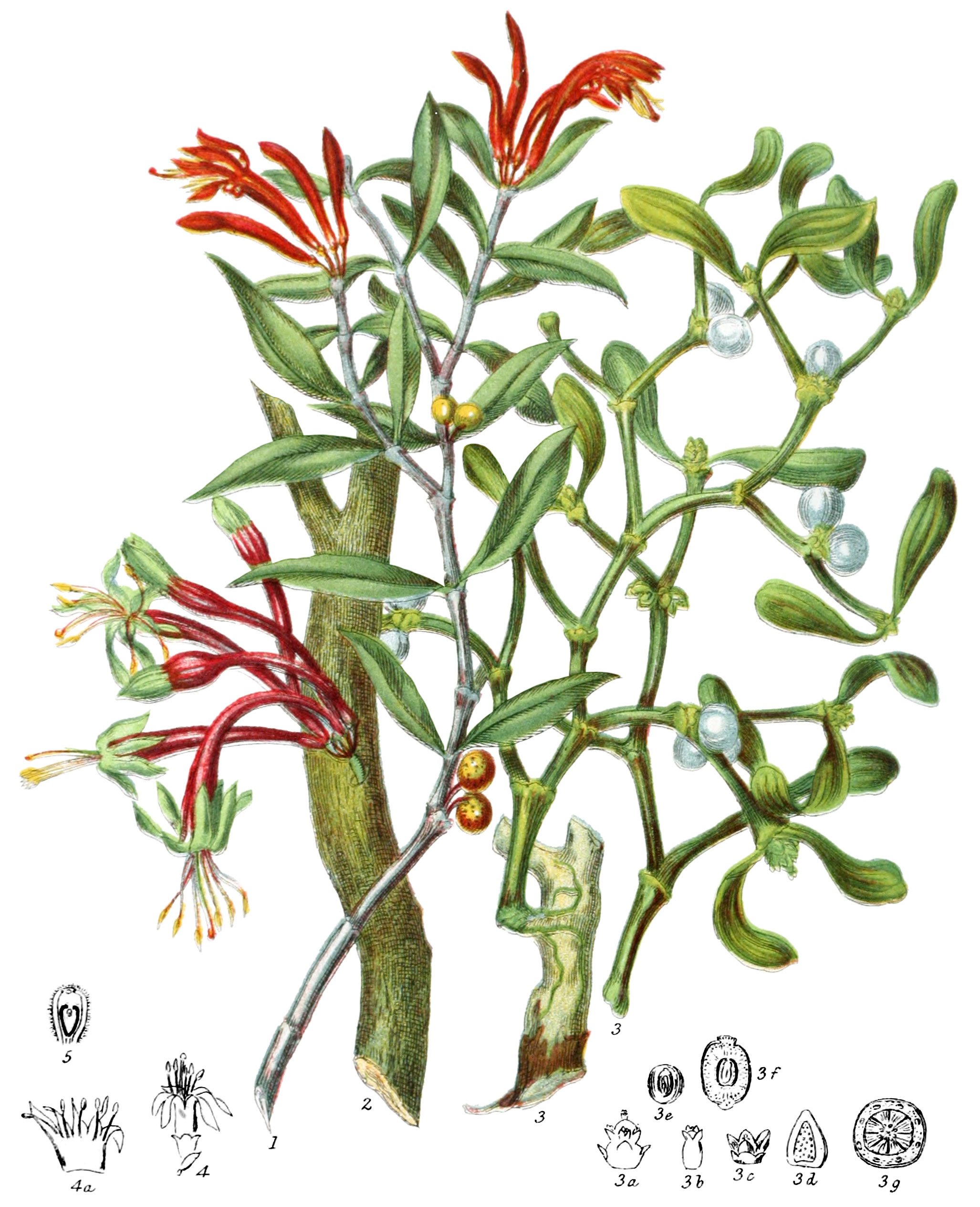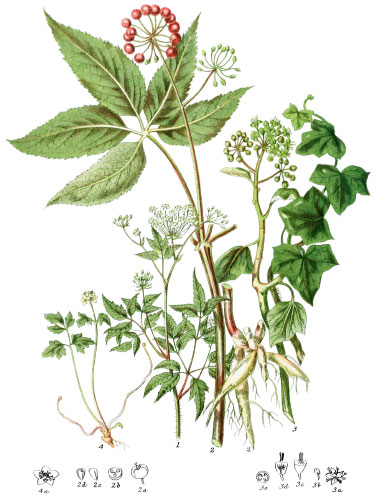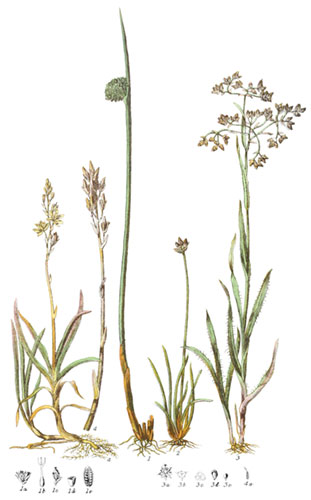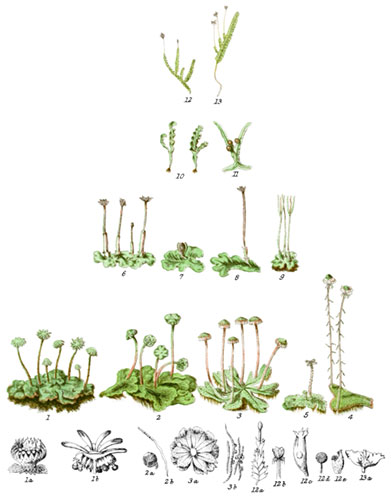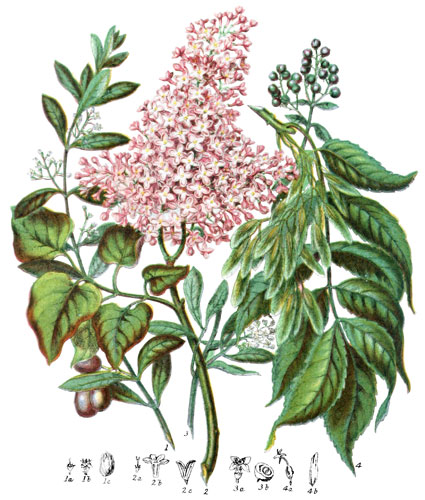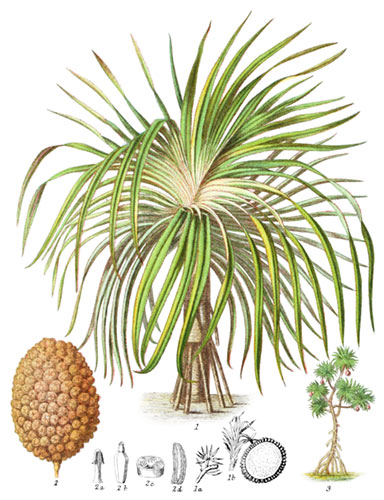Key characteristics
Shrubby plants, almost all of which are true parasites, growing into the tissue of other plants; the leaves are opposite, or sometimes alternate, fleshy, without stipules, generally veinless. The calyx rises from within the brim of the flower-stalk, and is usually surrounded with bracts at the base; the sepals are three, four, or eight, often united in a tube, sometimes enlarged and coloured, having the appearance of petals; true petals are wanting. The stamens are equal in number to the sepals, and opposite to them; in Viscum, they lie upon the inner surface of the sepals; the anthers are one or two-celled, or broken up into numerous cavities. The ovary is one-celled, sunk within the cup-like expansion of the flower-stalk, and adhering to it. The style is single, the stigma simple, sometimes invisible. The fruit is succulent or dry, one-celled; the seed is solitary, with fleshy albumen.
This Order has most affinity with the Sandal-wood tribe, but it differs from it and all others in some peculiar points of structure, and manner of growth.
The astringent bark and viscid berries insoluble in water or alcohol are the chief properties of these plants; they possess also the singular quality of rooting and vegetating on other plants.
Select plants in this order
Not all plants listed are illustrated and not all plants illustrated are listed.
- Viscum album (3) is remarkable for being the only true parasitical plant of Britain, not commencing its growth in the ground, as the Dodder, nor deriving any direct portion of nourishment from it afterwards like the Orobanche. The seed enveloped in its glutinous substance, falls on some favourable part of a tree, and remains fixed, whilst the roots insinuate themselves between the bark and the wood; as soon as the albumen of the seeds is exhausted, the roots extract nourishment from the wood of the supporting tree. The young wood of Viscum is divided into eight portions around the central pith; outside these are smaller bundles of fibres. Other parasites seem to attach themselves to peculiar plants, but the Mistletoe is found upon various trees besides the traditional Oak; it may be seen on the Maple, Poplar, Lime, Ash, and in Germany sometimes on the Pinus sylvestris. The ancient Druids considered it a sacred plant, or at least employed as a symbol of some religious meaning; perhaps as a sign of abstraction from earth and contemplation of heaven, it being the only specimen of the vegetable kingdom with which they could have been acquainted, growing and flourishing without any actual derivation of support from the earth. It was customary with them to carry about branches of it to proclaim the celebration of the new year; useful information in those times when such common knowledge was scantily diffused, and welcome tidings to the poor peasant, whose dreary life was in need of the cheering influence of their periodical festivals. The white berries ripen on the branches of the preceding year, and the plant appears in greatest perfection in the winter.
- Loranthus (1) has an enlarged, tubular, and often brightly coloured calyx, having the aspect of a true corolla. The glutinous seed affixing itself to a branch of stem, occasionally to a leaf, stretching out the sucker-like fibres of the root over it in the same manner as Viscum; the shoots extend to a considerable distance. The growth have proved that these parasites have a peculiar eliminating power; Loranthus, although not of a milky nature, can establish itself on a species of the Bread-fruit, which is full of a milky juice.
- Viscum was found to contain twice as much potash and five times as much phosphoric acid, as in the wood of the Apple-tree on which it was growing.
- Some species of Loranthus are said to be used as medicine in Brazil; some in Java have large leaves, of a dull, pale, grey colour beneath.
- L. tetrandus yields a black dye in Chile.
- Nuytsia floribunda is an exception to the usual habits of this tribe, being a shrub growing on the ground; the flame-coloured flowers come forth in great abundance, and caused it to be named the Fire-tree by the colonists of King George’s Sound.
- N. ligustrina grows in the arid parts of the Blue Mountains, west of Port Jackson, in Australia.
- Misodendron belongs to the Antarctic regions, and was discovered amongst the few shrubs and trees on Hermite Island, west of Cape Horn, at the southern limits of arborescent vegetation on the globe.
Locations
This tribe is nearly equally dispersed through the Tropics of Asia and America; it is much more rare in Africa, two species only known in the equinoctial countries, and six at the Cape of Good Hope. A few have been discovered in the islands of the South Seas, and in Australia. Loranthus abounds in Java. L. europæus of south Europe connects the tropical portion of these plants with the solitary British species Viscum.
Legend
- Loranthus Evenius. Java.
- Loranthus formosus. Java.
- Viscum album, Common Mistletoe. Britain.
- Cluster of Fruitful Flowers.
- Single Pistil Flower.
- Stamen Flower.
- Stamen, magnified.
- Seed.
- Section of Fruit.
- Section of Stem.
- Flower of Loranthus pendrandrus.
- Flower, open.
- Section of Fruit of Loranthus chrysanthus.
Explore more
Posters
Decorate your walls with colorful detailed posters based on Elizabeth Twining’s beautiful two-volume set from 1868.
Puzzles
Challenge yourself or someone else to assemble a puzzle of all 160 botanical illustrations.
